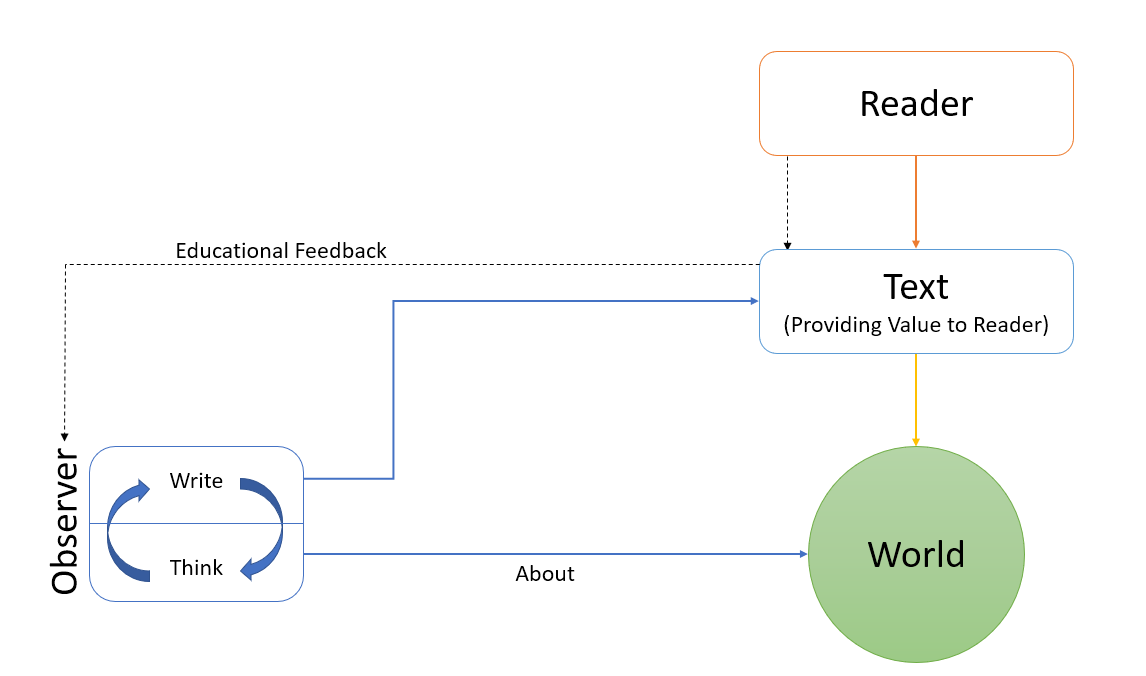McEnerney's Lecture on Writing Effectively
I’m a visual learner with a penchant for elegant diagrams. Such diagrams tend to boil things down to an essence, and often present a unique perspective on the subject at hand. So I was glad to stumble into Larry McEnerney’s lecture on “The Craft of Writing Effectively”. McEnerney, director of University of Chicago’s Writing Program, creates a visualization that jolts a new, nuanced understanding of writing.
McEnerney begins the session with a proclamation of the writing program’s unique teaching philosophy. He insists that one’s writing ability tends to decrease over time; in fact, the University of Chicago started its writing program to help the faculty rather than the students. McEnerney presents the notion that subject matter expertise is inversely proportional to writing ability. So the program utilizes a top-down approach to helping experts in any arbitrary field improve their writing.
These opening remarks may be befuddling, so let’s jump to McEnerney’s visualization of the writing process:

The diagram illustrates an abstraction of the writing process that symbolizes thinking (on the horizontal axis) and writing (on the vertical axis). You’ll notice that McEnerney couples the actions of writing and thinking. The observer recursively thinks and writes about the matter at hand. This iterative process is innate - it is typically how complex ideas and knowledge can form and evolve. In other words, the writing is an aid to one’s thinking. But it is vital to separate the process from the product. The primary objective of one’s published writing is to effectively deliver value to the reader.
Written text is a manifestation of conceptual progress made along the horizontal axis. The potential to influence the reader (via the text) is measured along the vertical axis. McEnerney suggests an interference pattern as the reader’s natural, downward reading momentum is consistently disrupted by the horizontally-impacting language of the author’s text. A clear and effective writing style reduces this interference, and is conducive to finding value tucked within text. Whereas obfuscated text sends readers scrambling. McEnerney’s illustration is somewhat poetic: imagine the reader parachuting down to Earth while facing a steady, orthogonal barrage of words. Effective writing allows the reader to grasp and retain the text’s value during the tumultuous ride down.
So why does there seem to be a systemic issue of decreased writing abilities associated with increased expertise of a given knowledge area? Let’s turn our attention to the black dashed line in the diagram. Within traditional education systems, the observer represents a young student and the reader represents the teacher. In such an arrangement, the student is not attempting to influence the teacher. Rather, the student is attempting to display a proficiency of newly-learned material via text. The reader is paid to meticulously comb through the text and provide feedback on the observer’s thinking and writing process. This represents a divergence of the fundamental writing process. Thus, the education system does not generally train students to write effectively.
It is the writer’s duty to cater value to the reader in an efficient manner. The text delivered to a reader must be strained from the thinking process, and the velocity of efficient value-delivery should be monitored carefully. But above all, the text must be of value to the reader.
References
- The Craft of Writing Effectively by Maurice Kendall, University of Chicago